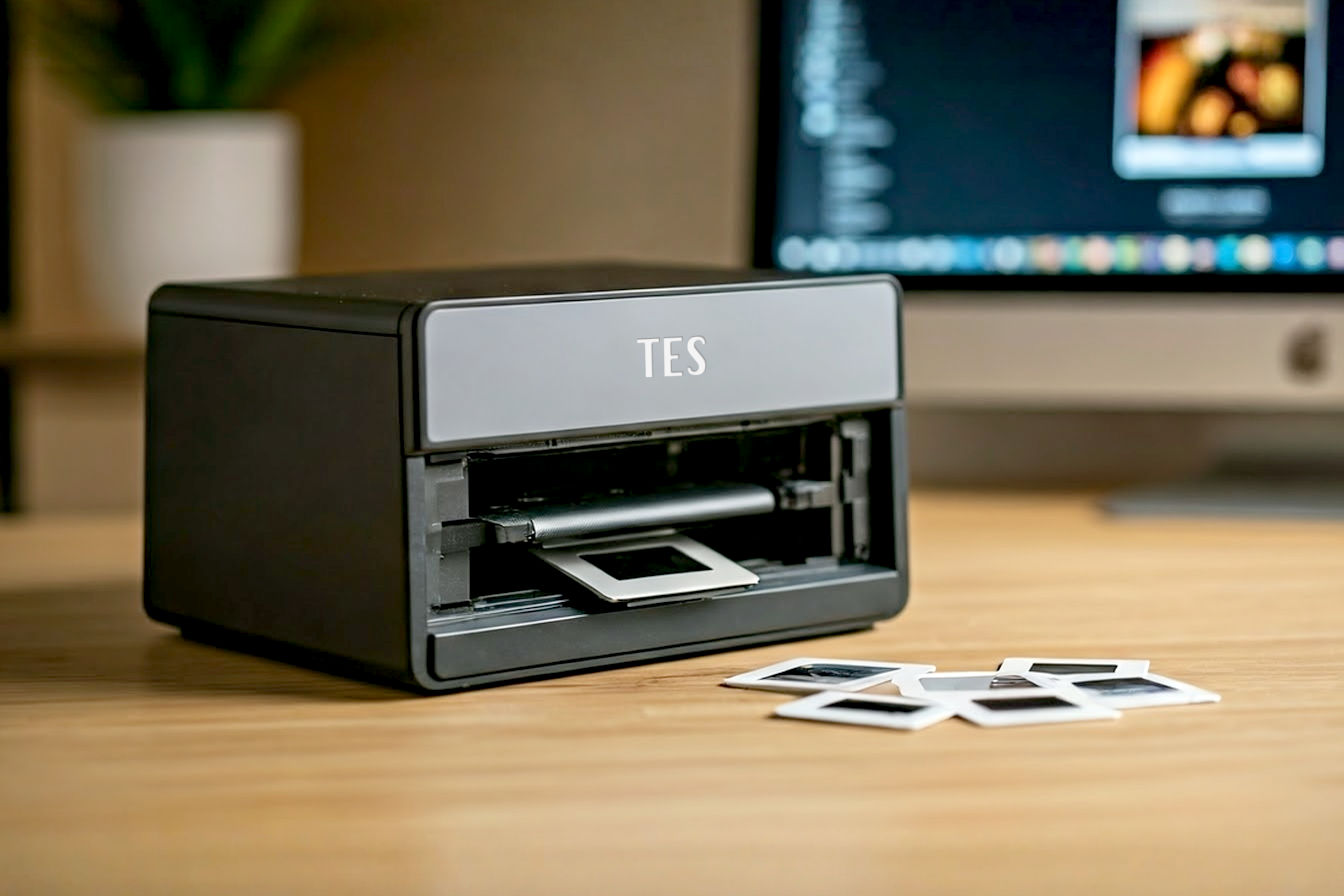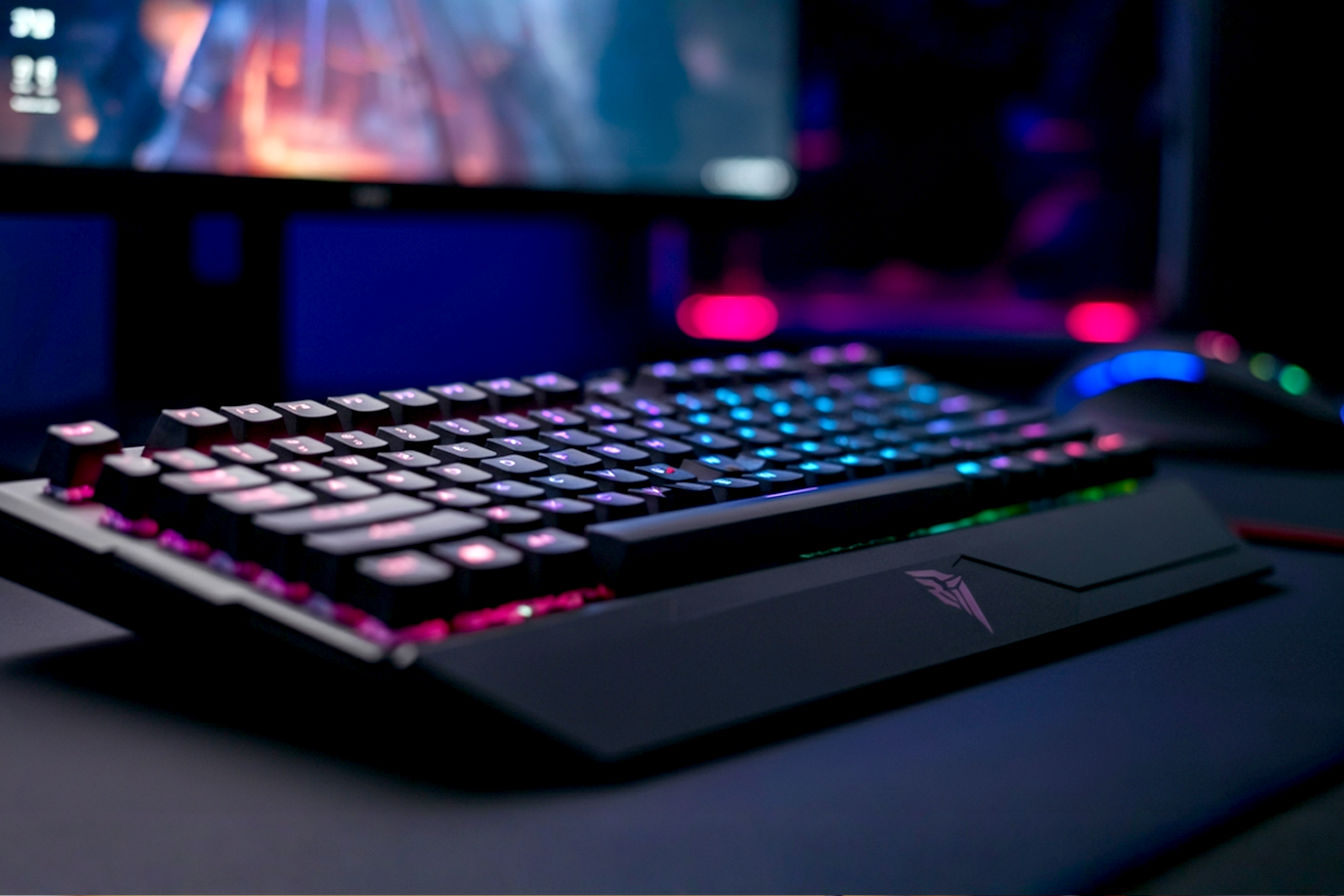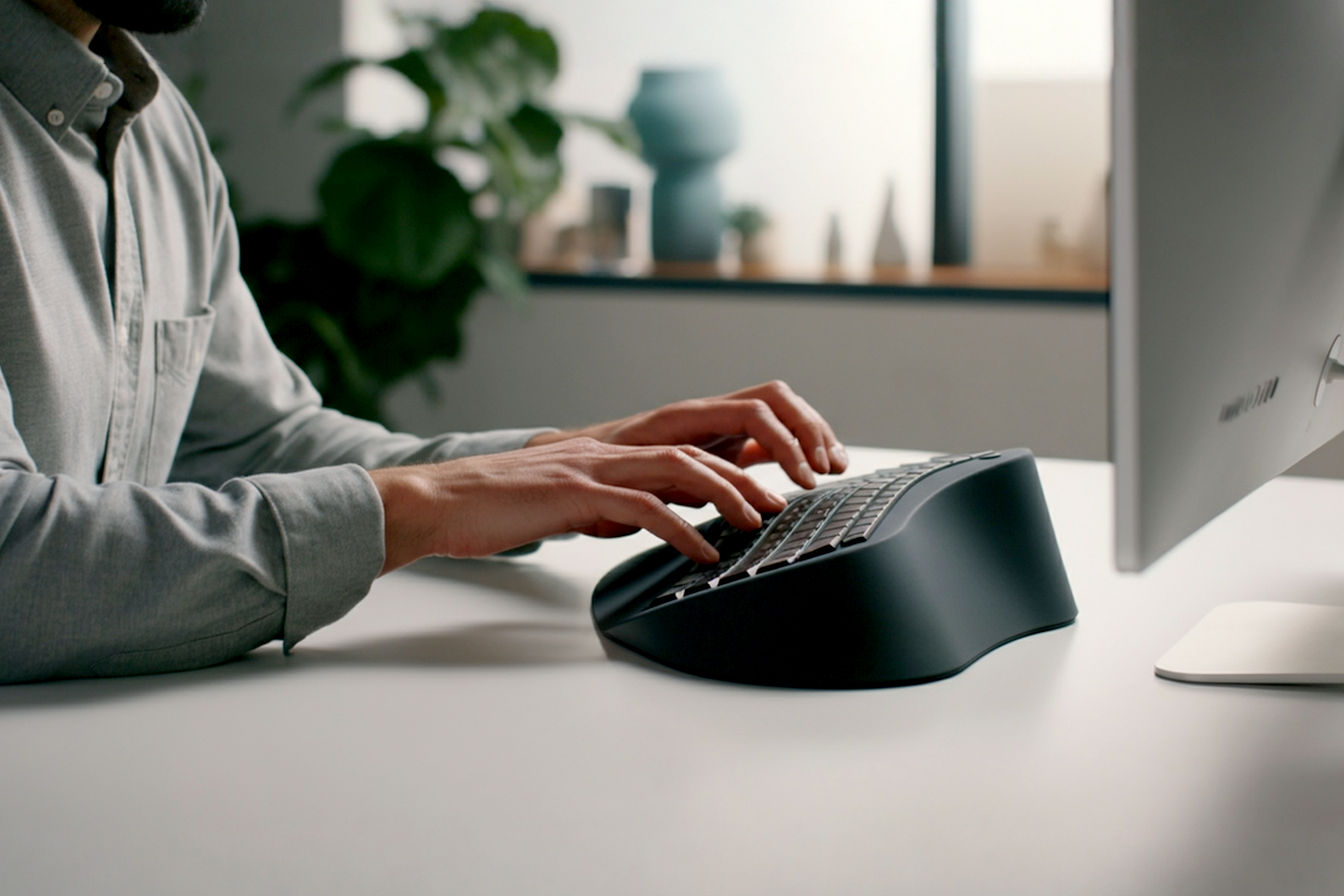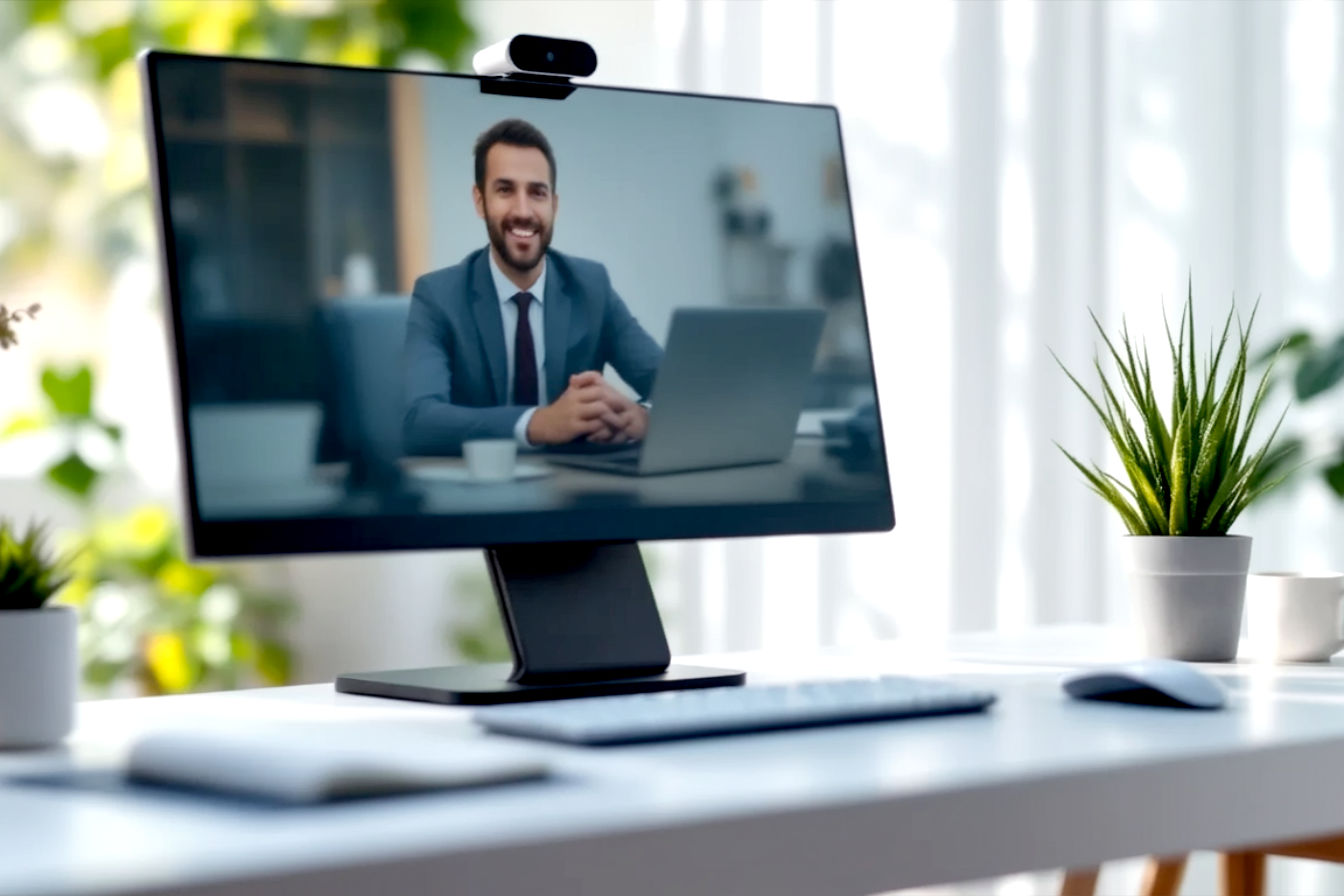This post may contain affiliate links. If you make a purchase through these links, we may earn a commission at no additional cost to you.
Introduction: The Unseen Window – Why Webcam Privacy Matters More Than Ever
In our hyper-connected world, webcams are everywhere. They’re built into our laptops, tablets, and smartphones, and they sit atop our desktop monitors. These tiny lenses connect us to colleagues for virtual meetings, to family across the miles, and to friends for casual chats. But have you ever stopped to think about who else might be looking through that unseen window? The unsettling thought that your private moments could be exposed without your knowledge is a stark reality of modern digital life. While it might seem like a small thing, a physical webcam cover is a simple yet incredibly crucial first line of defense in a multi-layered strategy to protect your personal privacy.
It’s not about being paranoid; it’s about being prudent. The threat of unauthorized webcam access is real, and the consequences can range from embarrassing to devastating. This guide will delve into why your computer camera needs a cover, explore the ways your webcam can be compromised, and most importantly, provide you with five essential privacy fixes to help you regain control and secure your digital space. We’ll look beyond just the cover and discuss a holistic approach to safeguarding your online presence.
Understanding the Threat: How Can Your Webcam Be Compromised?
Before we jump into solutions, it’s vital to understand the nature of the threat. How exactly can someone gain unauthorized access to your computer’s camera? It’s rarely like in the movies with hackers furiously typing code to break into a live feed in seconds. The reality is often more insidious, relying on trickery or exploiting security weaknesses.
The Rise of “Camfecting”: Unauthorized Webcam Access Explained
“Camfecting” is a term that combines “camera” and “infecting,” and it refers to the act of hacking into a person’s webcam to watch or record them without their permission. This is typically achieved by tricking a user into installing malicious software (malware) on their computer. One of the most common tools for this is a Remote Access Trojan (RAT).
What is a RAT? (Simplified Explanation): Imagine a RAT as a digital spy that you accidentally let into your computer. Once inside, this spy can control parts of your computer remotely, including turning on your webcam, recording video, taking screenshots, logging your keystrokes (what you type), and stealing files. You often won’t even know it’s there.
Technical Detail: How RATs Work: A RAT is a type of malware that creates a backdoor into a victim’s computer system. The attacker (the person controlling the RAT) can then connect to this backdoor from their own computer, giving them administrative control over the infected machine. Common RATs like Gh0st RAT, DarkComet, or Blackshades (though many variants exist and new ones emerge) are often bundled with legitimate-looking files, such as email attachments, software downloads from untrusted sources, or links to infected websites.
Once a RAT is installed:
- Stealthy Installation: It often installs itself silently, without any obvious signs to the user.
- Remote Control: The attacker can access a control panel that allows them to issue commands to the infected computer.
- Webcam Activation: One of the key features is the ability to activate the webcam and microphone. The attacker can view a live stream, record video, and capture audio.
- Data Exfiltration: Beyond the webcam, RATs can steal passwords, financial information, personal documents, and browser history.
- Persistence: Many RATs are designed to restart automatically when the computer boots up, ensuring continued access for the attacker.
There have been numerous documented cases of camfecting. Perhaps one of the most high-profile was the 2013 Miss Teen USA, Cassidy Wolf, who was extorted by a hacker who had compromised her laptop webcam. Many other less publicized incidents occur regularly, highlighting that this isn’t just a theoretical threat.
Who’s Watching? Motives Behind Webcam Hacking
The motivations behind webcam hacking are varied, but generally fall into a few categories:
- Cybercriminals for Financial Gain: This is a primary driver. Attackers might use compromised webcam footage for “sextortion,” where they threaten to release embarrassing or intimate videos unless a ransom is paid. They might also use webcam access to gather information that aids in identity theft or financial fraud, such as capturing images of credit cards, ID documents, or even observing someone typing passwords.
- Voyeurism and Harassment: Some individuals hack webcams simply for the perverse thrill of spying on unsuspecting victims in their private spaces. This is a gross violation of privacy and can cause significant emotional distress. The footage might also be shared on illicit online forums.
- Targeted Attacks (Corporate or State-Sponsored): While less common for the average individual, high-value targets such as executives, government officials, or activists might be targeted for espionage purposes. A webcam could provide visual intelligence about a person’s activities, contacts, or sensitive documents.
- Pranks or Malicious Mischief: Sometimes, particularly with less sophisticated attackers, the motive might be to simply cause distress or play malicious pranks, though the impact on the victim is no less serious.
Understanding these motives underscores the importance of taking webcam security seriously, regardless of who you are.
Can They Really Watch Without the Light On? Debunking a Common Myth
Most webcams have an indicator light that turns on when the camera is active. This light is intended to alert you that your camera is in use. A common question is: Can hackers activate the webcam without this indicator light turning on?
The Short Answer: It’s complicated, but you should not solely rely on the indicator light as proof your camera is off.
Simplified Explanation: In many older or less secure webcams, the software that controlled the camera could sometimes be manipulated by malware to activate the camera sensor without triggering the LED indicator. For many modern laptops, especially those from manufacturers like Apple, the camera’s power line is physically tied to the LED indicator light. This means if the camera gets power, the light must turn on. This is a hardware-level safeguard.
Technical Detail:
- Software Control: In some webcam designs, the LED is controlled by the firmware or driver software. Sophisticated malware could potentially find ways to bypass or suppress the software command that activates the LED while still accessing the camera sensor. Researchers have demonstrated this possibility on certain models in the past.
- Hardware Interlock: Many newer devices, particularly MacBooks, have a hardware interlock. The camera sensor simply will not receive power unless the LED indicator also receives power. This makes it physically impossible for the camera to be active without the light also being on. This is a much more secure design.
- Firmware Hacking (Highly Sophisticated): Theoretically, if an attacker could modify the webcam’s firmware itself (a very advanced and difficult attack), they might be able to decouple the LED from the camera operation. This is extremely unlikely for average users but remains a theoretical possibility for highly targeted attacks against specific hardware.
The Bottom Line: While many modern devices have improved hardware safeguards, the diversity of webcam hardware and software means it’s unwise to assume the light is an infallible indicator. A physical cover offers a guarantee that no software trickery can bypass. If the lens is covered, no one can see through it, light or no light.
Beyond Paranoia: Real Risks of an Uncovered Webcam
The idea of being watched is creepy, but the tangible risks associated with an unsecured webcam go far beyond simple discomfort. These risks can have serious and lasting consequences.
Invasion of Personal Privacy: More Than Just an Image
The most direct risk is a profound invasion of your personal privacy. Your home is your sanctuary, a place where you expect to be unobserved. An activated webcam can capture:
- Intimate and Private Moments: Activities in bedrooms, bathrooms (if a laptop is carried there), or any personal interactions you wouldn’t want public.
- Family Life: Interactions with children, spouses, and other family members.
- Your Environment and Habits: Details about your home, your routines, when you’re home or away. This information could potentially be used for other malicious purposes, like planning a burglary.
- Private Conversations: While the primary concern is visual, webcams almost always have microphones. Attackers can capture audio, including sensitive discussions, arguments, or confidential work-related calls.
The psychological impact of discovering you’ve been spied on can be immense. Victims often report feeling violated, anxious, and unsafe in their own homes. This erosion of personal security is a significant harm in itself.
Blackmail and Extortion: The Dark Side of Camfecting
One of the most nefarious uses of compromised webcam footage is for blackmail or “sextortion.” Attackers capture compromising or embarrassing images or videos of their victims. They then contact the victim, threatening to release this content publicly—to friends, family, employers, or on the internet—unless a ransom is paid, often in cryptocurrency to make it harder to trace.
- Emotional Toll: Victims face immense pressure, shame, and fear. The threat of public humiliation can be devastating.
- Financial Loss: Ransoms can be substantial, and there’s no guarantee the attacker will delete the material even if paid. They might demand further payments.
- Reputational Damage: Even if the material isn’t widely released, the fear of it can severely impact a person’s mental health and relationships.
This type of crime preys on vulnerability and can have long-lasting psychological and financial consequences.
Identity Theft and Information Gathering
An unsecured webcam can be an unwitting accomplice in identity theft and broader information gathering efforts by cybercriminals.
- Visual “Shoulder Surfing”: If your webcam is active while you’re working, it could inadvertently capture you typing passwords, credit card numbers, or other sensitive login credentials.
- Capturing Documents: You might have sensitive documents visible on your desk or screen – bank statements, ID cards, passports, confidential work papers. A compromised webcam could take snapshots of these.
- Building a Profile: Information gleaned from webcam footage (your environment, visible items, routines) can be combined with other stolen data (from data breaches, phishing attacks) to build a more complete profile of a victim, making identity theft easier or more effective. For instance, seeing a particular bank’s paperwork on a desk might tell an attacker where you bank, making a phishing email from that “bank” more believable.
While a webcam might not be the only tool used, it can provide crucial pieces of the puzzle for identity thieves.
The First Line of Defense: Why a Physical Cover is Non-Negotiable
Given the potential for software to be compromised and indicator lights to be potentially unreliable or bypassed in some scenarios, the simplest and most effective solution is often a physical one.
The Simplicity and Effectiveness of a Physical Barrier
A physical webcam cover is a straightforward concept: if the lens is blocked, the camera cannot see anything. It’s a hardware solution that software-based attacks simply cannot overcome.
- Malware-Proof: No matter how sophisticated the malware or RAT, it cannot magically see through an opaque physical object.
- Absolute Peace of Mind: Knowing your camera is physically covered provides a level of certainty and peace of mind that software solutions alone cannot offer. You don’t have to wonder if your security software is up-to-date or if a new, undetected threat is active.
- User-Controlled: You decide when the camera is available. You slide the cover open when you need to use the webcam for a video call and slide it shut immediately afterward.
This simple act puts you back in control of your visual privacy.
Types of Webcam Covers: Pros and Cons
There are several types of physical webcam covers available, each with its own advantages and disadvantages:
Sliding Covers
These are typically small, thin pieces of plastic or metal that stick to your laptop or monitor around the webcam lens. They have a sliding mechanism that allows you to easily cover and uncover the lens.
- Pros:
- Convenient: Easy to open and close with a flick of a finger.
- Reusable: Once attached, they stay in place.
- Aesthetic: Often designed to be sleek and unobtrusive.
- Variety: Available in various materials (plastic is common, metal is more durable) and designs.
- Cons:
- Adhesion: The quality of the adhesive is crucial. Poor adhesive can mean the cover falls off. Some strong adhesives might leave residue if removed, though most are designed not to.
- Thickness: If too thick, a sliding cover on a laptop might prevent the lid from closing completely or even potentially damage the screen when the lid is pressed shut. Look for ultra-thin designs.
- Durability: Cheap plastic ones can break.
Sticker Covers/Tape
This is the DIY, low-cost option. A small piece of opaque tape (like electrical tape or a sticky note tab) can be placed over the lens.
- Pros:
- Cheap/Free: You likely already have tape or sticky notes.
- Universally Applicable: Can be cut to fit any device.
- Thin: Unlikely to interfere with laptop closing.
- Cons:
- Residue: Many tapes leave a sticky residue on the lens or device surface, which can be hard to clean and may affect camera clarity if not fully removed.
- Opacity: Some tapes (like painter’s tape or some sticky notes) might not be fully opaque and could still allow a blurry image through.
- Durability/Convenience: Tape can lose its stickiness, fall off, or tear. It’s not ideal if you frequently use your webcam, as repeatedly removing and reapplying tape is cumbersome and wears it out.
- Looks: Generally not aesthetically pleasing.
Built-in Shutters (Privacy Shutter)
Many newer laptops and some external webcams now come with a physical shutter built directly into the device. This is often a small slider integrated into the bezel around the camera.
- Pros:
- Integrated and Seamless: No need to buy or attach anything extra.
- Convenient: Designed for easy use.
- Reliable: Being a physical part of the device, it’s generally a very secure hardware block.
- No Adhesion/Residue Issues: Part of the laptop’s design.
- Cons:
- Availability: Not all devices have them. You can’t add one if your device wasn’t designed with it.
- Potential for Mechanical Failure (Rare): Like any mechanical part, it could theoretically break, though this is uncommon.
- Accidental Opening: While less likely than a loose sticker, ensure it’s firmly closed.
Choosing the Right Cover: What to Look For
If you’re purchasing a webcam cover (and your device doesn’t have a built-in one), consider these factors:
- Ultra-Thin Design: This is especially critical for laptops. A cover that is too thick can put pressure on the screen when the laptop is closed, potentially causing damage. Look for covers specifically marketed as “ultra-thin” (often 0.03 inches / 0.7mm or less).
- Strong but Non-Damaging Adhesive: You want the cover to stay put but also be removable without damaging your device or leaving a hard-to-clean residue. Reputable brands usually use 3M or similar quality adhesives.
- Durability: Metal covers will generally last longer than plastic ones, but good quality plastic is also fine. Read reviews for insights into longevity.
- Ease of Use: The sliding mechanism should be smooth and easy to operate.
- Size and Fit: Ensure the cover is large enough to fully obscure the lens but not so large that it blocks sensors (like ambient light sensors) or the microphone if they are nearby. Most are designed for standard laptop webcams.
- Material: Plastic is common and affordable. Metal offers a more premium feel and potentially better durability.
- Aesthetics (Optional but Nice): Covers come in various colors and designs, so you can choose one that matches your device or preference.
Ultimately, even a piece of tape is better than nothing, but for long-term convenience and reliability, a dedicated sliding cover or a device with a built-in shutter is preferable.
5 Essential Privacy Fixes to Secure Your Webcam and Beyond
A physical webcam cover is your foundational defense, but true digital privacy requires a multi-layered approach. Here are five essential fixes to bolster your webcam security and overall online safety.
Fix 1: Install and Maintain a Physical Webcam Cover (The Foundation)
We’ve covered this extensively, but it bears repeating: this is your non-negotiable first step.
- Why it’s essential: It’s a physical barrier that no malware can bypass.
- Action: If your device doesn’t have a built-in shutter, get a sliding webcam cover. Choose one that is thin, uses good adhesive, and is easy to operate. If you’re in a pinch, use opaque tape, but plan to upgrade to a proper cover.
- Habit: Keep it covered whenever you’re not actively and intentionally using your webcam. Slide it open for your meeting, slide it shut immediately after.
This simple habit drastically reduces the risk of visual spying.
Fix 2: Keep Your Software and Operating System Up-to-Date
Malware, including RATs that can control your webcam, often exploits known security flaws in your operating system (like Windows or macOS), web browser, or other applications. Software developers regularly release updates and patches to fix these vulnerabilities.
- Why it’s essential: Updates are like fixing holes in your digital armor. If you don’t update, you’re leaving known entry points open for attackers.
- Action:
- Enable Automatic Updates: For your operating system (Windows Update, macOS Software Update), web browsers (Chrome, Firefox, Edge, Safari usually auto-update), and other critical software. This is the easiest way to stay protected.
- Manually Check Periodically: Sometimes automatic updates can fail, or some less common software might require manual updating. Make it a habit to check for updates if you’re not sure.
- Technical Detail: Vulnerability Patching and Zero-Day Exploits:
- Vulnerability: A weakness in software code that can be exploited by an attacker to perform unauthorized actions.
- Patch: A piece of software code released by developers to fix a known vulnerability.
- Zero-Day Exploit: This is an attack that exploits a vulnerability that is unknown to the software vendor or for which no patch is yet available. While you can’t directly prevent zero-days (as they are, by definition, unknown until discovered), keeping all other software patched reduces the overall “attack surface” and means that once a zero-day is discovered and patched, you’ll get that protection quickly if auto-updates are on.
Regularly updating your software is one of the most effective free security measures you can take.
Fix 3: Use Robust Antivirus and Anti-Malware Software
Antivirus (AV) and anti-malware (AM) software are designed to detect, block, and remove malicious software, including the RATs that enable camfecting.
- Why it’s essential: Even if you’re careful, malware can sometimes slip through. Good security software acts as a crucial safety net.
- Action:
- Install Reputable Software: Choose a well-known and well-reviewed antivirus/anti-malware solution. Windows comes with Microsoft Defender, which is a solid option. macOS has its own built-in protections (like XProtect and Gatekeeper), but some users opt for third-party AV as well.
- Keep it Updated: Just like your OS, your security software needs its definition files (the database of known threats) updated constantly to recognize new malware. This is usually automatic.
- Enable Real-Time Scanning: This feature actively monitors your system for malicious activity as it happens, rather than just when you run a manual scan.
- Run Regular Full Scans: While real-time scanning is key, schedule occasional full system scans for a deeper check.
- Consider Webcam Protection Features: Some security suites offer specific features to alert you or block unauthorized attempts to access your webcam.
- Free vs. Paid: Many excellent free options exist (like Microsoft Defender for Windows). Paid versions often offer more features, such as enhanced firewall protection, parental controls, or identity theft protection. For core malware protection, free versions from reputable vendors are often sufficient for home users.
Security software is your digital immune system; keep it healthy and active.
Fix 4: Be Vigilant About Clicks and Downloads: Phishing and Suspicious Links
The most common way malware, including RATs, gets onto a computer is through user action – clicking a malicious link, opening an infected email attachment, or downloading software from an untrusted source.
- Why it’s essential: Attackers rely on tricking you. Being able to recognize and avoid these tricks is paramount.
- Action:
- Scrutinize Emails: Be wary of unsolicited emails, especially those with urgent requests, generic greetings (“Dear Customer”), poor grammar, or suspicious attachments (like .exe files, or .zip files containing them, or even Word/Excel files with macros). Don’t click links or download attachments from unknown senders. If an email looks like it’s from a known company but seems off, go directly to that company’s website by typing the address in your browser rather than clicking the email link.
- Hover Before You Click: Before clicking any link (in an email, on a website, in a chat message), hover your mouse cursor over it. Your browser or email client will usually show the actual destination URL in the bottom corner. If it looks different from what the link text says, or if it’s a strange, jumbled address, don’t click.
- Download from Official Sources Only: Only download software from the official developer’s website or trusted app stores (like the Microsoft Store or Mac App Store). Avoid third-party download sites, which often bundle legitimate software with adware or malware.
- Beware of “Too Good To Be True” Offers: Free downloads of expensive software, amazing prize notifications, or urgent security alerts designed to make you panic and click – these are classic social engineering tactics.
- Technical Detail: Social Engineering: This is the art of manipulating people into performing actions or divulging confidential information. Phishing emails are a prime example. Attackers exploit human psychology—curiosity, fear, urgency, trust—to bypass technical security measures. You are the first line of defense against social engineering.
Think before you click. A moment of caution can prevent a serious infection.
Fix 5: Manage Application Permissions for Your Camera
Your operating system (Windows, macOS, Android, iOS) has built-in controls that allow you to manage which applications are allowed to access your camera and microphone.
- Why it’s essential: Even legitimate applications might request camera access they don’t strictly need. Limiting access reduces the risk of an app being exploited or a rogue app spying on you.
- Action:
- Regularly Review Permissions: Periodically check which apps have permission to use your camera and microphone.
- Revoke Unnecessary Access: If an application doesn’t need camera access for its core function (e.g., a photo editing app might need it to import from camera, but a calculator app definitely doesn’t), revoke that permission.
- Be Mindful During Installation: When you install a new application, pay attention to the permissions it requests. If it asks for camera access and you don’t see why it would need it, deny the permission or reconsider installing the app.
- Technical Detail: Checking Permissions:
- On Windows 10/11:
- Go to Settings > Privacy & security > Camera.
- Here you can see if camera access is on or off globally.
- You can see a list of Microsoft Store apps and desktop apps that have requested access. Toggle access on or off for individual apps.
- Do the same for Microphone permissions.
- On macOS:
- Go to System Settings (or System Preferences) > Privacy & Security > Camera.
- You’ll see a list of apps that have requested camera access. Uncheck the box next to any app you don’t want to have access.
- Do the same for Microphone permissions.
- On Windows 10/11:
Managing app permissions gives you granular control over which software can “see” and “hear” through your device.
Beyond the Cover: Additional Layers for Enhanced Digital Privacy
While a webcam cover and the five fixes above are crucial, true digital resilience comes from a broader approach to online security and privacy.
Strong, Unique Passwords and Two-Factor Authentication (2FA)
If an attacker gains access to your online accounts (email, social media, cloud storage), they might find sensitive information or be able to leverage that access to compromise your devices further.
- Strong, Unique Passwords: Don’t use the same password across multiple sites. If one site is breached, all your accounts using that password become vulnerable. Use a password manager to generate and store long, complex, unique passwords for each account. Examples include Bitwarden (free and paid), 1Password (paid), or LastPass (free and paid).
- Two-Factor Authentication (2FA): This adds an extra layer of security beyond just your password. When you log in, you’ll need your password and a second factor, like a code sent to your phone via SMS (less secure but better than nothing), a code from an authenticator app (like Google Authenticator, Authy, Microsoft Authenticator – more secure), or a physical security key. Enable 2FA wherever it’s offered, especially for important accounts like email, banking, and social media.
Secure Your Network: Wi-Fi Router Security
Your home Wi-Fi router is the gateway to the internet for all your devices. If it’s not secure, it can be a weak point.
- Strong Wi-Fi Password: Use WPA3 (if your router supports it) or WPA2 encryption with a strong, unique password for your Wi-Fi network. Don’t use the default password that came with the router.
- Change Default Router Admin Credentials: Your router has its own admin login (used to change settings). Change the default username and password for this immediately. These defaults are often publicly known (e.g., “admin”/”password”).
- Keep Router Firmware Updated: Just like your computer’s OS, your router’s firmware can have vulnerabilities. Check your router manufacturer’s website for firmware updates and install them. Some modern routers offer automatic updates.
- Consider a Guest Network: If your router supports it, set up a separate guest network for visitors. This isolates their devices from your main network where your personal computers and devices reside.
Awareness and Education: The Human Firewall
Technology can only do so much. The most powerful security tool is an informed and cautious user.
- Stay Informed: Cybersecurity threats are always evolving. Follow reputable tech news sources or security blogs to stay aware of new scams and vulnerabilities.
- Educate Family Members: Share your knowledge about online safety with your family, especially children and elderly relatives who might be more susceptible to certain scams.
- Be Cautious About Sharing: Think twice about the personal information you share online, whether on social media or elsewhere. The less an attacker knows about you, the harder it is to target you.
- Trust Your Instincts: If something feels “off” or “too good to be true” online, it probably is. It’s better to be overly cautious than to become a victim.
Conclusion: Taking Control of Your Digital Gaze
In an age where our lives are increasingly lived online, protecting our digital privacy is not a luxury but a necessity. Your webcam, that small, often overlooked lens, can be an unintentional window into your most private moments if not properly secured.
The good news is that taking control is within your reach. A simple physical webcam cover is an indispensable first step, providing an immediate and effective barrier against prying eyes. But true security is about layers. By implementing the five essential privacy fixes discussed—keeping software updated, using robust security software, being vigilant against phishing, managing app permissions, and of course, using that cover—you significantly strengthen your defenses.
Furthermore, extending these practices to include strong password hygiene, 2FA, and network security creates a comprehensive shield around your digital life. It’s about cultivating a mindset of awareness and proactive protection. You don’t need to be a tech expert to make a massive difference in your online safety. By taking these practical steps, you can confidently use your technology, knowing you’ve taken meaningful action to protect your privacy and ensure that the only person controlling your digital gaze is you.






